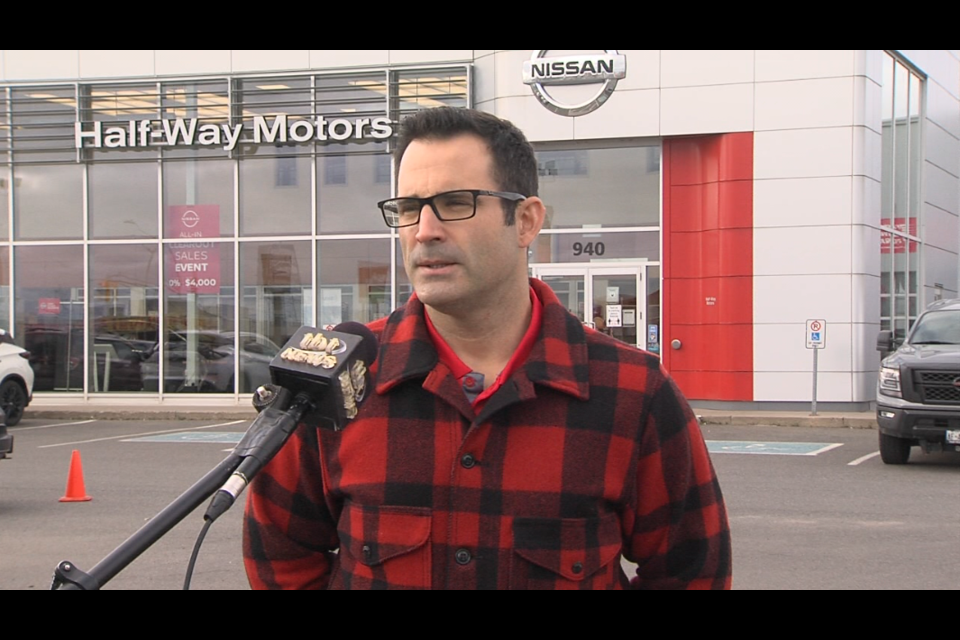THUNDER BAY — Patience and flexibility are two things buyers of new cars may need to bring with them when they visit their favourite Thunder Bay dealership these days.
Vehicle shipments from factories have been delayed this year by issues in the global supply chain, notably a shortage of semiconductor microchips caused by a variety of factors related to the pandemic.
Many customers hoping to find the ideal vehicle already on the lot are forced instead to place an order with the factory, and to be prepared to wait.
At Half-Way Motors, managing partner Patrick Trevisanutto says "Right now we're starting to see a lower supply of new vehicles, which is resulting in us having to have a higher level of communication with our customers, and manage delivery times and expectations."
Trevisanutto said factory orders have become more common.
"Clients are coming in looking for a specific vehicle...And where previously it would be six to eight weeks to get a vehicle in of any trim level and option package, now we have some vehicles that are eight to 12 weeks."
Trevisanutto said some buyers wanting a vehicle sooner may have to be more flexible regarding the colour and options.
When asked how long it will take to return to historical levels of inventory, he said he's been told it may take months "But that can change day to day. Everything's changing so fast based on COVID situations globally."
Trevisanutto remarked that the impact of COVID-19 on overseas factories where microprocessors are made has been compounded by other issues including a lack of shipping containers and delays in transport once vehicles arrive in North America.
Half-Way Motors, he said, is working with Nissan to ensure the local dealer gets its fair share of cars and trucks coming into the country.
At Dominion Motors, owner and general manager Tyler Dolcetti said most new vehicles arriving at his dealership have already been sold.
"Every day, vehicles are coming in and they're going out the door," he said, adding that 2021 to date has actually been a stronger year than pre-pandemic 2019 in terms of total sales.
Dolcetti said many customers are coming in to factory-order their preferred vehicle, but he's seeing delivery times starting to improve.
"Our hands are tied on our end. The manufacturers are working behind the scenes to increase the production of the semiconductors."
General Motors said this week, in fact, that it has made big strides in managing the microchip shortage.
As of next week, none of its plants will be idled by the semiconductor shortage for the first time since mid-summer.
Dolcetti said vehicles ordered from the factory are coming in faster now "because what they are doing is the semi-conductors are going to the assembly lines first, and then those vehicles are shipped off."
According to Kelley Blue Book, GM built thousands of vehicles — mostly its popular full-size trucks — to near-completion earlier this year, then parked them to wait for the microchips it needed to finish them.
The company said this week that it's halfway through installing chips in the vehicles parked at its factories.
But it's not only the new vehicle market where change has happened.
When there are fewer new cars, more consumers tend to buy used vehicles, which in turn drives up their price while decreasing inventory.
According to data from AutoTrader.ca, the price of an average used car in Canada increased by 13 per cent in July from a year earlier. The average price of pickup trucks shot up even more, by 27 per cent.
"As long as there's a shortage of new vehicles, we will see a higher demand on pre-owned vehicles. It's pretty simple supply and demand economics on that right now," a spokesperson at one Thunder Bay dealership said.
There was a similar spike in used car sales during the global financial crisis in 2008.
